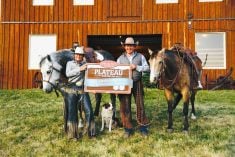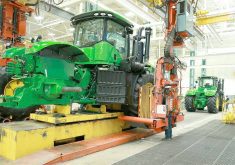Mentioning R-CALF to a Canadian cattle producer has about the same effect as pulling your fingernails across a chalkboard.
The Ranchers and Cattlemen Action Legal Fund was formed in 1998 to fight for the livelihoods of small U. S. ranchers. It first set its sights on rising Canadian cattle imports, which it blamed for lower returns for U. S. cattle. For a while, it was successful in making that case to courts and U. S. trade tribunals.
After this country discovered its first case of bovine spongiform encephalopathy (BSE) in 2003, R-CA LF lobbied hard to keep the U. S. border closed to Canadian cattle, this time due to health concerns.
Read Also

Guarding against misinformation: Do you believe in house hippos?
Misinformation and disinformation run rampant in today’s digital age. Farmers must be wary of the digital dangers and know how to keep themselves safe.
So it seems logical to assume that if R-CA LFissupportingproposedchanges to the Grain Inspection, Packers and Stockyards Administration (GIPSA) rules on marketing, that can’t be good for Canada. That’s the tone taken by the Canadian Cattlemen’s Association at its recent semiannual meeting in Calgary.
CCA ’sdirectorofinternationalrelations John Masswohl categorized the new GIPSA rules as a “sinking ship for all of us.”
But hold on just a minute.
U. S. packers and stockyard operators are lobbying hard against these new rules. Most producers would hardly consider them to be on the same side when it comes to determining a fair price for cattle.
And should Canadians be taking sides on this anyway?
The representative from the U. S. National Cattlemen’s Beef Association (NCBA ) told the CCA meeting packers will be afraid to offer quality or deliver premiums for fear of being sued if they don’t make the same offer to everyone.
Transparency
The new regulations, which are currently open to public comment, are designed to increase transparency in the U. S. cattle markets. It would require a packer, contractor or live poultry dealer to maintain written records to justify differential pricing offered to producers.
For example, a packer would be in violation if it paid a higher price to one high-volume producer than what it offered to a group of smaller producers who can collectively supply the same quality and quantity.
A poultry or swine contractor could find itself in violation if it selectively imposes expensive upgrades on contractors, or terminates a production contract without notice or due cause.
R-CALF is among more than 60 U. S. farm groups that signed on in support of the proposed changes in a July letter to U. S. legislators. In that letter, they point out that the U. S. Packer and Stockyards Act makes it unlawful for packers, swine contractors, and live poultry dealers to engage in any “unfair, unjustly discriminatory, or deceptive practice or device,” or to “make or give any undue or unreasonable preference or advantage to any particular person or locality in any respect, or subject any particular person or locality to any undue or unreasonable prejudice or disadvantage in any respect.”
However, there were never any regulations issued by GIPSA to define what these broad prohibitions meant or how to adequately enforce them on behalf of livestock and poultry producers. The proposed rules were mandated in the 2008 Farm Bill to rectify that.
“Over past decades, very little attention was focused on the effects of ongoing industry concentration and supply chain integration on the competitiveness of U. S. livestock and poultry markets,” the groups wrote.
“Now we find that competition in the market where producers sell their livestock and poultry to the packers has all but disappeared. Unfortunately, the ongoing livestock procurement practices of packers, which evolved with radical industry restructuring, has institutionalized unfair trade practices and manipulative marketing schemes that are now viewed by many as being normal and natural. We adamantly disagree with that view.”
In other words, just because that’s how the highly concentrated business of contracting and buying livestock is structured, it doesn’t make it fair or in the best public interest.
Many Canadian cattle ranchers and hog producers would agree.
There is little question the new regulations are subject of a hot debate in the U. S. More than 1,000 ranchers and livestock producers turned out to a recent USDA public hearing in Fort Collins, Colorado on concentration in the meat industry. Most of the discussion was on the pros and cons of the proposed GIPSA rules.
The biggest fear brought forward is that, rather than improve the ability of small-scale operators to extract fair market returns, packers will use these new regulations to drive down the price for all. Since that would presumably be to their advantage, why are they opposed?
The Canadian cattle industry is in the unenviable position of being a bench warmer in a policy game that affects its future. But although R-CALF is no friend of the Canadian cattle exporters, in this debate, it may not be its enemy either.
———
“Overpastdecades,verylittle attentionwasfocusedonthe effectsofongoingindustry concentrationandsupply chainintegrationonthe
competitivenessofU.S.livestock andpoultrymarkets.”
Letter from 60 U. S. farm groups















